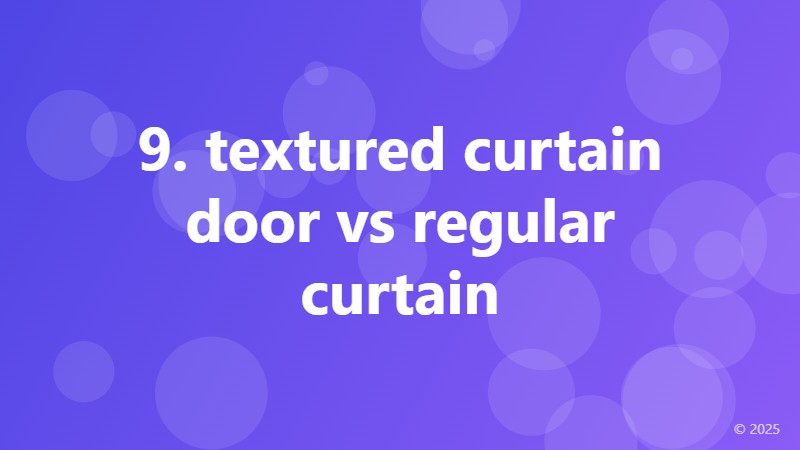9. textured curtain door vs regular curtain

Why Textured Curtain Doors Stand Out from Regular Curtains
When it comes to dressing up your windows, there are numerous options to choose from, including regular curtains and textured curtain doors. While both options can add style and functionality to your space, they differ significantly in terms of design, functionality, and overall aesthetic appeal. In this article, we'll delve into the differences between textured curtain doors and regular curtains, helping you make an informed decision for your home or office.
Design and Aesthetic
One of the most notable differences between textured curtain doors and regular curtains lies in their design and aesthetic appeal. Regular curtains typically feature a smooth, flat surface, often in a solid color or subtle pattern. Textured curtain doors, on the other hand, boast a unique, three-dimensional texture that adds depth and visual interest to your windows. This textured element can be achieved through various materials, such as woven fibers, embossed patterns, or even natural elements like rattan or bamboo.
The textured design not only adds a touch of sophistication to your space but also creates a sense of movement and flow, which can be particularly striking in rooms with large windows or sliding glass doors. In contrast, regular curtains can sometimes appear flat and lifeless, especially when hung in a straightforward, symmetrical manner.
Functionality and Performance
Beyond their aesthetic differences, textured curtain doors and regular curtains also vary in terms of functionality and performance. Regular curtains are often designed primarily for privacy and light control, with a primary focus on blocking out sunlight and providing a sense of seclusion. Textured curtain doors, while still offering these benefits, also provide additional functionality through their unique design.
The textured element can help to reduce noise levels, making them an excellent choice for rooms that require a high level of sound absorption, such as home theaters or music rooms. Additionally, the three-dimensional design can create a sense of layering, allowing you to control the amount of light entering the room with greater precision.
Practicality and Maintenance
When it comes to practicality and maintenance, textured curtain doors and regular curtains share some similarities. Both options are relatively easy to clean, with most materials suitable for machine washing or dry cleaning. However, the textured design of curtain doors may require slightly more attention, as the three-dimensional element can trap dust and debris more readily.
On the other hand, textured curtain doors often feature a more durable construction than regular curtains, making them a better choice for high-traffic areas or rooms with pets or young children. The textured element can also help to conceal minor stains or imperfections, reducing the need for frequent cleaning or replacement.
Conclusion
In conclusion, while both textured curtain doors and regular curtains have their advantages, the former offers a unique combination of design, functionality, and performance that sets it apart from its flat, smooth counterpart. If you're looking to add a touch of sophistication and elegance to your space, textured curtain doors are certainly worth considering. With their ability to control light, reduce noise, and create a sense of movement, they're an excellent choice for anyone seeking to elevate their window treatment game.